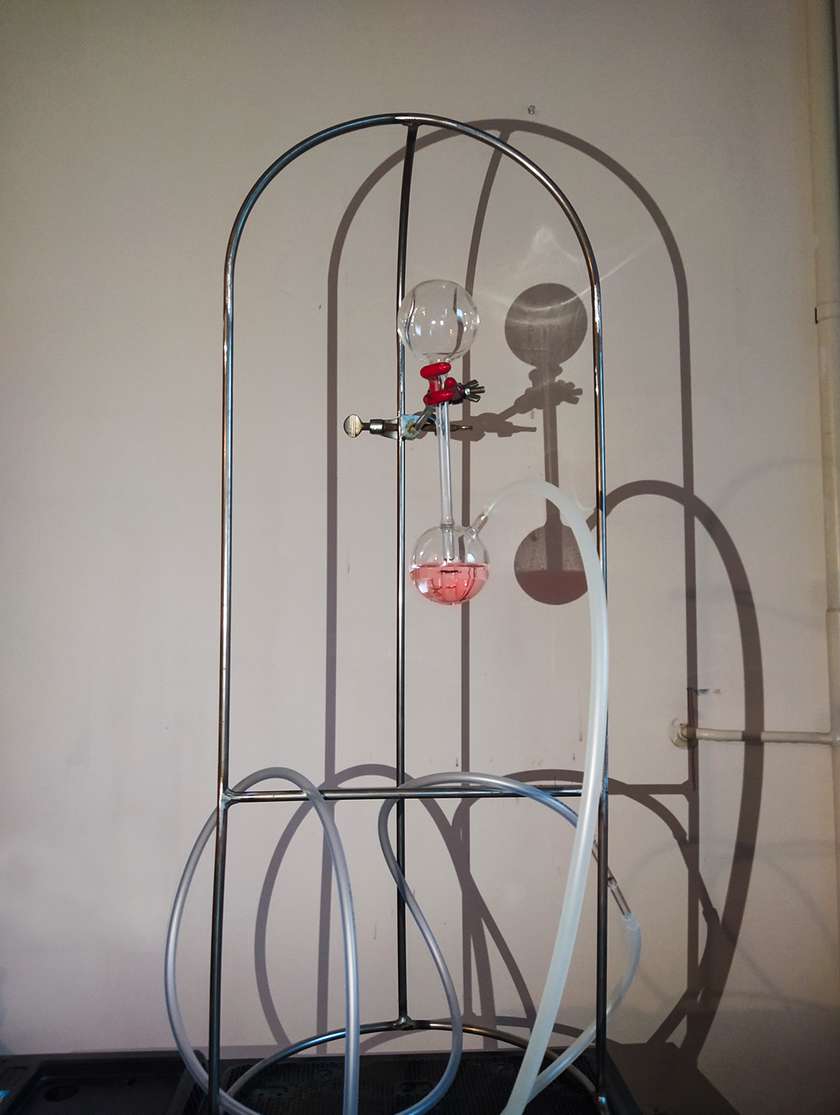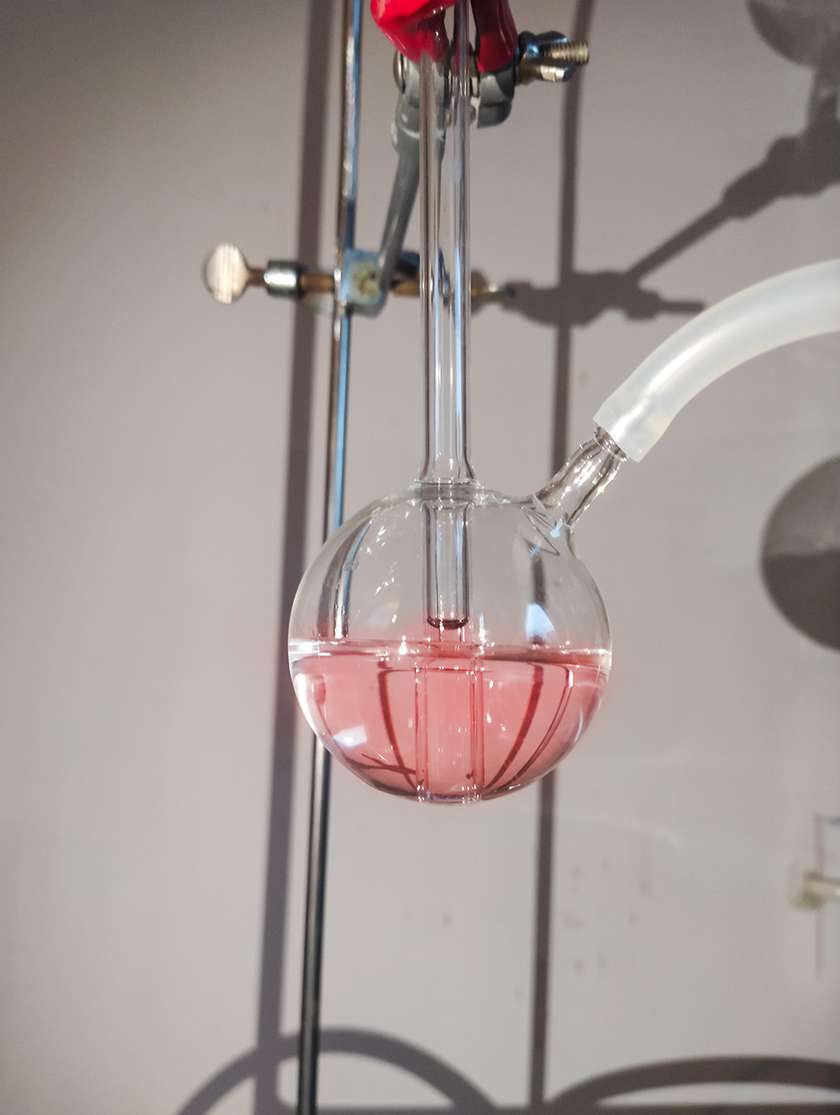Idea by
M.Arch. Milica Grbic
https://www.behance.net/milicagrbi6762
Call for ideas 2021
Crush Installation
Crush Installation
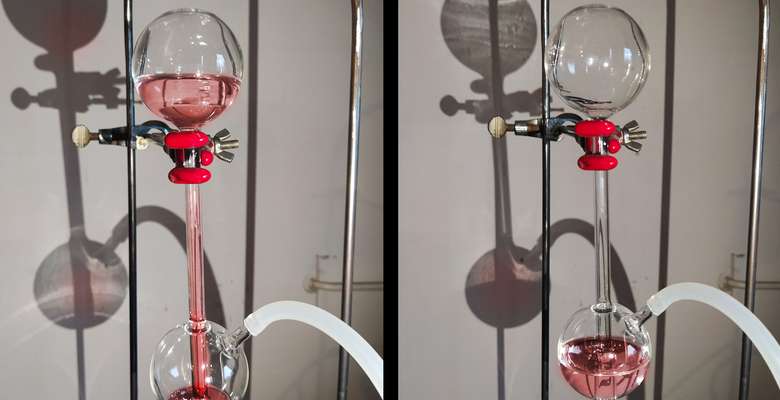
- Site-specific cases
Crush installation is based on a text by author Andrew Pickering ,,Being in an environment: a performative perspective''.
Interaction with the installation emphasizes the idea of refusal of the human specialness. What would happen if we stop building dams? Is it a passive and, at the same time, a performative action?
In regards to the Installation Crush, performative action is necessary- by using force, the participant redirects water from the lower sphere to the upper one. The water remains in the upper sphere, defying the Law of Gravity. After the performative action, comes stagnation- water remains in the altered state, provoking the viewer to question his or hers sanity and view of technology.
The person interacting with the installation has the initial power move, but, after that... He or she is reduced to a mere observer. Similar to that situation, in our daily lives, we are just observing changes to our urban environment, unable to change them in a meaningful way.
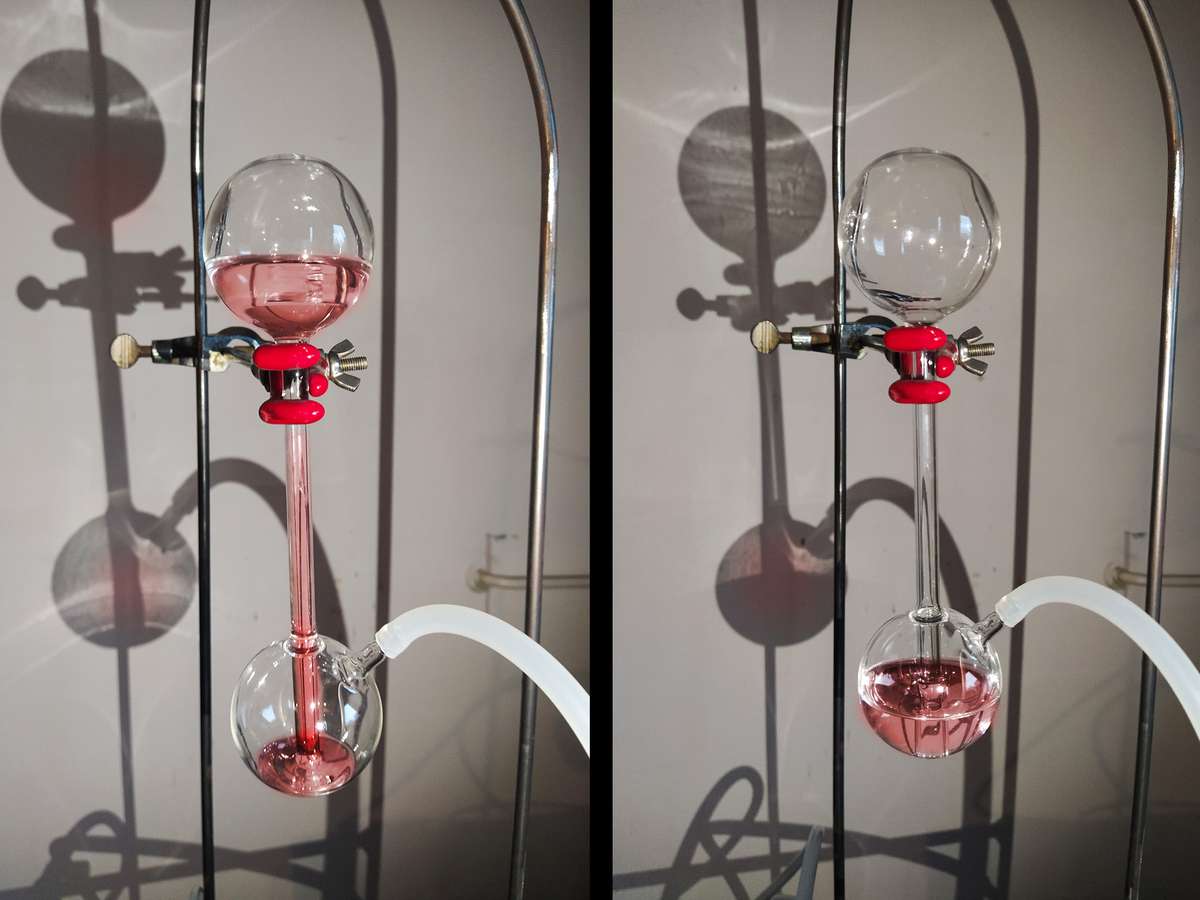
By using force, the participant redirects water from the lower sphere to the upper one. The water remains in the upper sphere, defying the Law of Gravity. After the performative action, comes stagnation- water remains in the altered state, provoking the viewer to question his or hers sanity, perception and view of nature, technology and its laws.
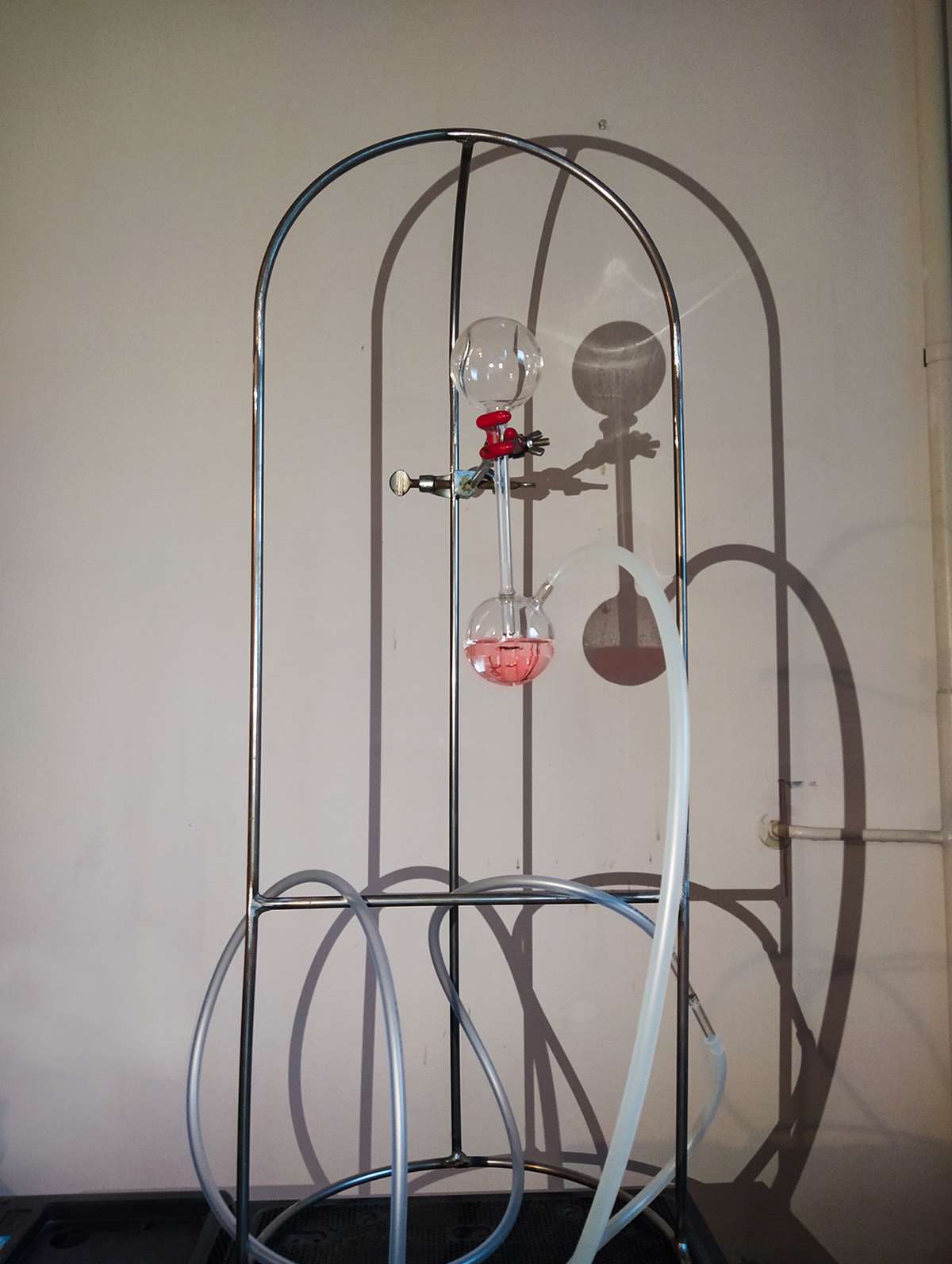
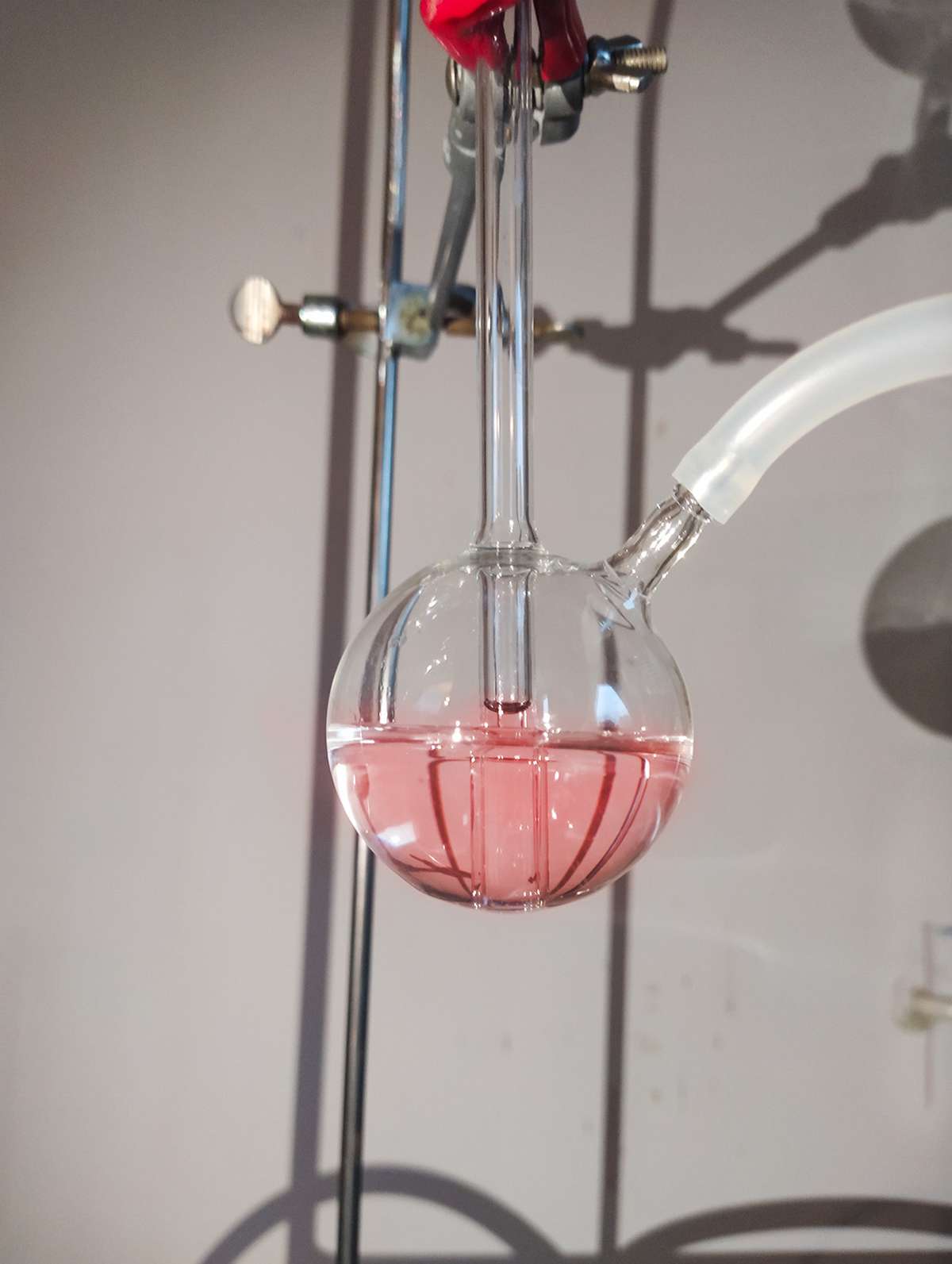
Crush Installation
Crush Installation

- Site-specific cases
Crush installation is based on a text by author Andrew Pickering ,,Being in an environment: a performative perspective''.
Interaction with the installation emphasizes the idea of refusal of the human specialness. What would happen if we stop building dams? Is it a passive and, at the same time, a performative action?
In regards to the Installation Crush, performative action is necessary- by using force, the participant redirects water from the lower sphere to the upper one. The water remains in the upper sphere, defying the Law of Gravity. After the performative action, comes stagnation- water remains in the altered state, provoking the viewer to question his or hers sanity and view of technology.
The person interacting with the installation has the initial power move, but, after that... He or she is reduced to a mere observer. Similar to that situation, in our daily lives, we are just observing changes to our urban environment, unable to change them in a meaningful way.
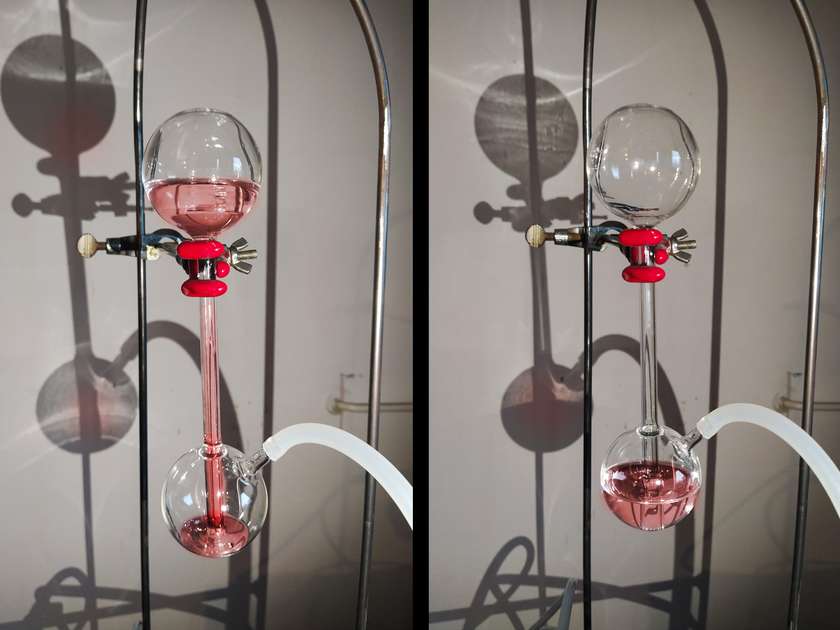
By using force, the participant redirects water from the lower sphere to the upper one. The water remains in the upper sphere, defying the Law of Gravity. After the performative action, comes stagnation- water remains in the altered state, provoking the viewer to question his or hers sanity, perception and view of nature, technology and its laws.
